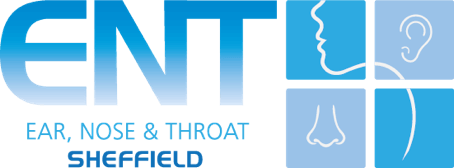Your consultation will be in a relaxed atmosphere where you can go over your symptoms adequately. You can come with a spouse, friend or relative if this makes you feel more at ease or if you feel you may forget some things during the consultation. A relative, partner or friend around during the consultation may also be helpful in case you do not remember everything that was said during the consultation.
Listening to you and sometimes asking directed questions is an important part of the consultation. Please bring along a list of your medication if you are on any. Your past medical history will also be enquired about, ie previous operations and past/present medical conditions.
An examination of the affected part of the body is then carried out. This does not usually hurt except in acutely inflamed conditions in which case care is taken to keep discomfort to you to the barest minimum.
For some people, further procedures may be required to help reach a diagnosis. Examples of these procedures include:

Ear micro suction
This is removing ear wax or debris with a tiny vacuum under magnification of your ear canal with a microscope. This is what most ear, nose and throat specialists use to remove wax from the ear rather than ear syringing. This is the removal of wax and/or debris under direct vision with a microscope.
Rigid rhinoscopy
This is similar to a flexible nasoendoscopy but the telescope used here is shorter and rigid. It is to thoroughly examine the nose and openings to the sinuses. A local anaesthetic nose spray or nasal decongestant is usually used to improve the view of the nose.
Cautery of the nose
This involves using a chemical to burn small blood vessels in the nose that cause nose bleeds. A local anaesthetic nose spray is sometimes used for this.
Flexible Nasoendoscopy
This is using a small flexible telescope to examine the voice box and throat. It is usually carried out with you sitting comfortably in a chair with or without a local anaesthetic nose spray a few minutes before the procedure. The procedure takes no more than about two to four minutes to complete. It is not painful but more of a ticklish feeling of something in the nose and back of the throat. It is a significant advance from the traditional mirror examination of the throat and voice box as the voice is looked at directly. Mr Olarinde uses high resolution digital video endoscopic equipment to examine your throat at all the hospitals where sees patients. Pictures and videos of the throat and voice box can sometimes be taken and stored electronically. The findings of the examination are discussed with you straightaway.
Fine needle aspiration of a neck lump
This is a needle test to obtain some cells from a neck lump for examination by a pathologist (doctors who examine tissues and cells to arrive at a diagnosis). The neck lump is injected with a needle. Cells are aspirated and sent off to the laboratory to be analysed. This gives useful clues about the cause of the neck lump. This procedure is usually done while having an ultrasound scan (similar to what pregnant ladies have) of the neck – an ultrasound guided biopsy. The main advantage of this is that the needle test is more precise with a much better chance of getting enough cells to help decide the cause of the neck lump.
Epley’s Manouevre
Epley’s manoeuvre is a treatment manoeuvre carried out for patients with a certain cause for their vertigo i.e. Benign Positional Paroxysmal Vertigo. A test to confirm the diagnosis is first carried out and the Epley’s manoeuvre follows on from the test. It is only applicable in patients with Benign Positional Paroxysmal Vertigo. The diagnosis of Benign Positional Paroxysmal Vertigo is made by taking a careful history.
In some situations, investigations are required. Common investigations include hearing tests, blood tests and scans.
The consultation usually finishes off with a discussion with Mr Olarinde about the cause of the symptoms and management measures. Most people have questions to ask and these are carefully answered.
Laryngoscopy at Thornbury Hospital
Laryngoscopy at Claremont Hospital
Laryngoscopy is using a small flexible telescope to examine the voice box and throat. It is usually carried out with you sitting comfortably in a chair with or without a local anaesthetic nose spray a few minutes before the procedure. The procedure takes no more than about two to four minutes to complete. It is not painful but more of a ticklish feeling of something in the nose and back of the throat. It is a significant advance from the traditional mirror examination of the throat and voice box as the voice is looked at directly. Mr Olarinde uses high-resolution digital video endoscopic equipment to examine your throat at all the hospitals where sees patients. Pictures and videos of the throat and voice box can sometimes be taken and stored electronically. These high quality endoscopic photos can be compared at subsequent visits. The findings of the examination are discussed with you straight away.
